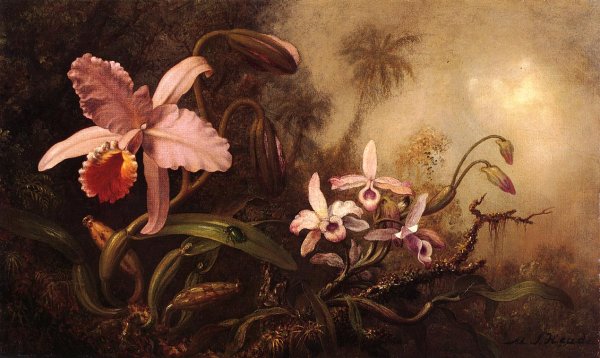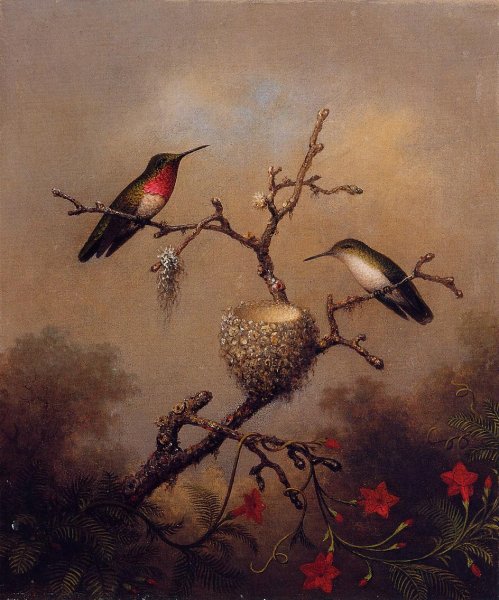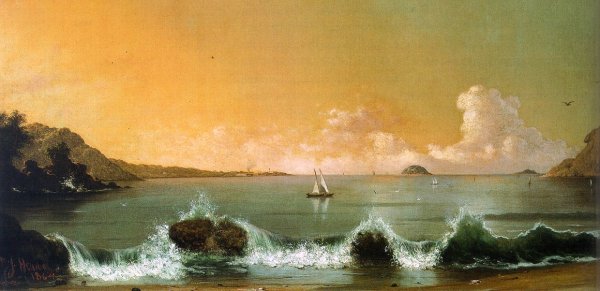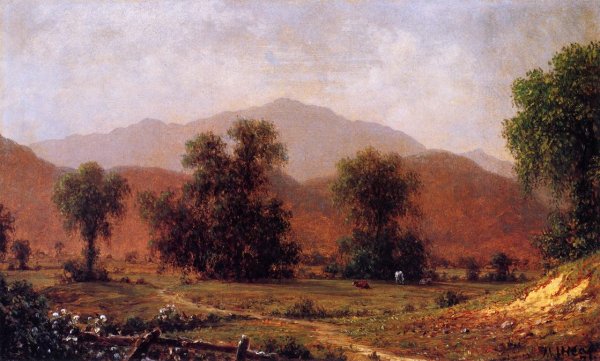Martin Johnson Heade Biography In Details
Stylistic classification

Art historians have come to disagree with the common view that Heade is a Hudson River School painter, a view given wide currency by Heade's inclusion in a landmark exhibition of Hudson River School landscapes at the Metropolitan Museum of Art in 1987.
The leading Heade scholar and author of Heade's catalogue raisonne, Theodore E. Stebbins, Jr., wrote some years after the 1987 Hudson River School exhibition that "...other scholars-myself included-have increasingly come to doubt that Heade is most usefully seen as standing within that school."
According to the Heade catalogue raisonne, only around 40 percent of his paintings were landscapes. The remaining majority were still lifes, paintings of birds, and portraits, subjects unrelated to the Hudson River School. Of Heade's landscapes, perhaps only 25 percent were painted of traditional Hudson River School subject matter.
Heade had less interest in topographically accurate views than the Hudson River painters, and instead focused on mood and the effects of light. Stebbins writes, "If the paintings of the shore as well as the more conventional compositions...might lead one to think of Heade as a Hudson River School painter, the [marsh scenes] make it clear that he was not."
Childhood and early career

Heade was born in 1819 in Lumberville, Pennsylvania, a small hamlet along the Delaware River in Bucks County, Pennsylvania, and spent his childhood there. Until the mid 1850s, his family owned the building and still ran the store which is now The Lumberville Store and Post Office, the village's sole general store. The family spelling of the name was Heed.
Historians believe he received his first art training from the folk artist Edward Hicks, who lived in the area. By 1839 Heade had painted his first portraits and, after traveling abroad and living in Rome for 2 years, in 1841 he exhibited his first work at the Pennsylvania Academy of the Fine Arts in Philaldephia. Heade began exhibiting regularly in 1848, after another trip to Europe, and became an itinerant artist until he settled in New York in 1859.
Transition to landscape painting
Around 1857 Heade became interested in landscape painting, partly through his meeting of established artists John Frederick Kensett and Benjamin Champney in the White Mountains of New Hampshire. Heade moved to New York City and took a studio in a building that housed many of the famous Hudson River School artists of the time. He became socially and professionally acquainted with them, and struck up a particularly close friendship with Frederic Edwin Church.
Tropical subjects

Heade's interest in the tropics was piqued at least partly by the impact of Church's monumental painting Heart of the Andes (1859), now in the collection of the Metropolitan Museum of Art. Heade travelled to Brazil from 1863 to 1864 to paint an extensive series of small works, eventually numbering over forty, depicting hummingbirds. He intended the series for a planned book titled "The Gems of Brazil", but the book was never published due to financial difficulty and Heade's concerns about the quality of the reproductions. Heade nevertheless returned to the tropics twice, in 1866 journeying to Nicaragua, and in 1870 to Colombia, Panama, and Jamaica. He continued to paint romantic works of tropical birds and lush foliage into his late career.
Salt marsh scenes
Heade's primary interest in landscape, and the works for which he is perhaps best known today, was the New England coastal salt marsh. Contrary to typical Hudson River School displays of scenic mountains, valleys, and waterfalls, Heade's marsh landscapes avoided depictions of grandeur. They focused instead on the horizontal expanse of subdued scenery, and employed repeating motifs that included small haystacks and diminutive figures. Heade also concentrated on the depiction of light and atmosphere in his marsh scenes. These and similar works have led some historians to characterize Heade as a Luminist painter. In 1883 Heade moved to Saint Augustine, Florida and took as his primary landscape subject the surrounding subtropical marshland.
Still Lifes
During his later years in St. Augustine Heade also painted numerous still lifes of southern flowers, especially magnolia blossoms laid on velvet. This was a continuation of an interest in still life that Heade had developed since the 1860s. His earlier works in this genre typically depict a display of flowers arranged in an ornate vase of small or medium size on a cloth-covered table. Heade was the only 19th century American artist to create such an extensive body of work in both still life and landscape.
Recognition, and Museum and Archival Collections

Heade was not a famous artist during his time, and for much of the first part of the 20th century was nearly forgotten. A re-awakening of interest in American 19th century art around World War II sparked new appreciation of his work, and art historians have come to consider him as one of the most important American artists of his generation. His work has inspired contemporary artists including and David Bierk and Ian Hornak.
His works are in most major American museums, including the Museum of Fine Arts in Boston, Massachusetts, which owns the nation's outstanding collection of his works, including about 30 paintings as well as numerous drawings and sketchbooks; the Metropolitan Museum of Art in New York City; and the National Gallery of Art in Washington, D.C.
In 1955, Robert McIntyre, art historian and director of the Macbeth Gallery, donated a cache of Heade's personal papers to the Archives of American Art, part of the Smithsonian Institution. These papers included, among other things, Heade's sketchbook, notes, and letters from his friend and fellow artist, Frederic Edwin Church. In 2007, these papers were digitized and made accessible on the Web as the Martin Johnson Heade Papers Online.
In 1999 and 2000, Heade was the subject of a major exhibition organized by Theodore E. Stebbins, Jr. It traveled from the Museum of Fine Arts in Boston to the National Gallery of Art in DC, ending at the Los Angeles County Museum of Art.
In 2004, Heade was honored with a stamp from the U.S. Postal Service featuring his 1890 oil-on-canvas painting, "Giant Magnolias on a Blue Velvet Cloth." As Stebbins notes in his writings, Heade's work has also been copied and forged extensively. It should be noted, however, that since Heade was not popular during his lifetime, there were few contemporaries who emulated his work. 20th century copies are therefore readily apparent as fakes, since it takes oil paint decades to dry out and harden. (From Wikipedia)




